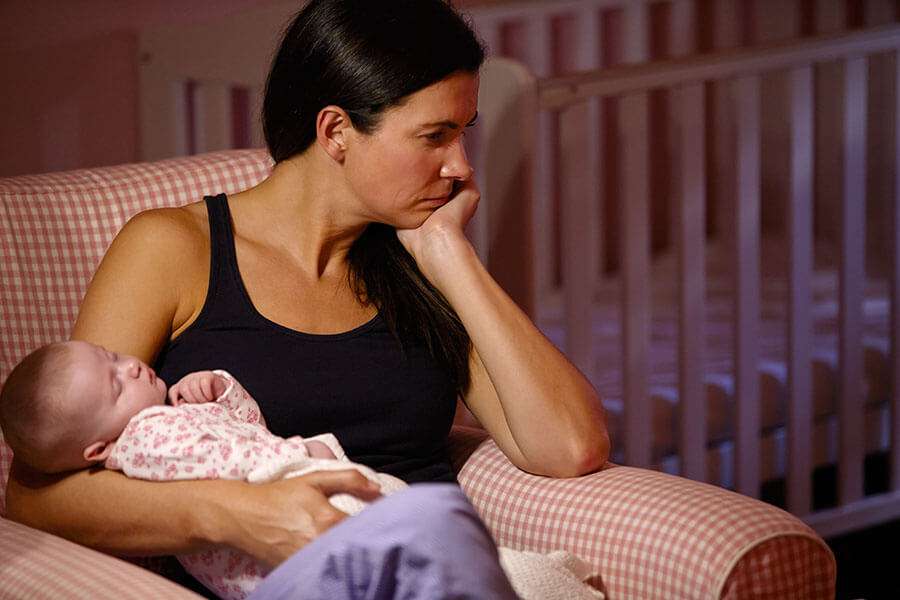What Is Postpartum PTSD?
Welcoming a baby into your life is usually thought of as a happy and exciting event. But for some of us, the experience of giving birth and becoming a parent can be frightening, disorienting, and even traumatizing. Approximately 9% of women experience postpartum post-traumatic stress disorder (PTSD) following childbirth, which is characterized by anxiety, panic attacks, agitation, nightmares, and flashbacks.
Postpartum PTSD can develop from any delivery experience a woman feels was traumatic relating to feelings of powerlessness, poor communication and/or lack of support and reassurance during the delivery, experiencing infertility, or giving birth to a baby with health complications.
Also, women with a history of prior trauma are also at increased risk, Postpartum PTSD can be very difficult to live with, especially as you are trying to care for your baby.
If you are experiencing signs of PTSD after having a baby, it’s important to understand that you are not alone, that postpartum PTSD is treatable, and that it’s possible to feel like yourself again.
Characteristics of Postpartum PTSD

Pregnancy, childbirth, and postpartum are all intense, transformative times of life. They are also marked by significant physical, hormonal, and emotional changes. All of this can impact new parents significantly, sometimes resulting in a postpartum mood disorder.
Most of us have heard of postpartum depression, but what you may not know is that postpartum depression isn’t the only possible mood disorder experienced by new parents after having a baby. Although postpartum PTSD is still being studied and understood, it’s thought to be experienced by as many as 9% of new parents, especially after a traumatic childbirth experience.
In many ways, postpartum PTSD is similar to the characteristics of post-traumatic stress disorder (PTSD) in general. The difference is that postpartum PTSD affects parents who have recently welcomed a baby into their lives and emerges in the first few weeks and months of the postpartum period.
Symptoms of Postpartum PTSD
Everyone experiences postpartum PTSD differently, but it is characterized by feelings of hypervigilance, fear, and intrusive thoughts.
Your feelings of panic may be elicited by thinking about something frightening that happened during childbirth, such as being rushed to the operating room for a C-section. Your emotions may be easily triggered when someone mentions something related to your childbirth or anything traumatic that happened to you during birth or postpartum.
Other symptoms of postpartum PTSD include:
- Avoidance of any reminders of the traumatizing events
- Avoidance of people or institutions associated with the traumatizing event, such as doctors or hospitals
- Sleep disturbances and frequent nightmares
- Flashbacks to the traumatic event
- Intrusive thoughts/images related to the trauma
- Being easily startled
- A general feeling that you or your baby are in danger
- Frequent panic attacks
- Feeling easily irritated or aggravated
- Feeling detached from others
- Wanting to withdraw from relationships
- Blaming yourself for the traumatic event
Diagnosis of Postpartum PTSD
Postpartum PTSD requires a formal diagnosis by a physician. Usually, your OB-GYN or midwife will ask you some questions about your mental health during your postpartum visit. If postpartum PTSD is suspected, they may refer you to a psychiatrist or psychologist for further investigation and treatment.
Unfortunately, many instances of postpartum PTSD may be missed since it’s not as highly recognized as a disorder as postpartum depression is. This may be especially true if the postpartum parent has had a relatively uncomplicated pregnancy, and postpartum PTSD is not suspected.
It’s important to note that you can be diagnosed with postpartum PTSD whether or not you have had a traumatic birth. About 3% of postpartum PTSD diagnoses are in parents who did not experience a life-threatening birthing experience.
Still, experiencing a high risk or traumatic birth does increase the likelihood of postpartum PTSD diagnosis. Experiencing a birth where you or your child’s life was in danger—such as an emergency C-section, or premature birth—increases your likelihood of a postpartum PTSD diagnosis to 16%.
Causes of Postpartum PTSD
Postpartum PTSD is usually linked to a traumatic birthing experience, often where the birthing parent felt that their life or their baby’s life was threatened in some way. They may have felt that certain procedures during birth happened suddenly, without warning, or that what was happening was not fully explained to them. Usually, there’s a feeling that one’s body autonomy has been threatened, and that the events of childbirth felt like they were spiraling out of control.
Examples of this may have included:
- An unplanned or emergency C-section
- A premature birth
- A baby who needed NICU care
- Unexpected birth complications such as prolapsed cord, vacuum/forceps delivery
- Postpartum hemorrhage
- Preeclampsia/eclampsia
- Significant postpartum tearing
Sometimes having a traumatic birth isn’t what causes postpartum PTSD. Other risk factors may include:
- A history of infertility, and needing assistance getting pregnant
- Having had a history of childbirth complications
- A history of abortion
- A history of social isolation
- A history of mental health challenges, including PTSD2 and depression
Treatment for Postpartum PTSD
Therapy
Thankfully, there are several treatment options for people who are struggling with postpartum PTSD. Many of them overlap with common treatment options for people who have general PTSD, not associated with having had a baby.
Most treatment options that are known to be effective in treating postpartum PTSD focus on Trauma-Focused Psychological Therapies (TFPT). These therapies have shown to be effective within the first 3 months postpartum, as well as in the first 3-6 months postpartum.
The most widely recommended therapies for managing postpartum PTSD include:
- Exposure therapy, which involves carefully, but purposefully exposing you to the thing that you are afraid of.
- Cognitive behavioral therapy, a type of therapy that involves identifying and changing your negative thought patterns.
- Eye movement desensitization and reprocessing (EMDR), a therapy designed to explore your past traumas and use eye movement techniques to reduce the intensity of the triggers and memories.
Medication
Often, the treatment for something like postpartum PTSD involves both therapy and medication. You can talk to your doctor or your psychiatrist to determine which medication is right for you. Most of the medications used to treat postpartum depression, such as selective serotonin reuptake inhibitors (SSRIs) can also successfully treat postpartum PTSD.
Many of the medications used to treat postpartum PTSD are compatible with breastfeeding. You or your doctor can consult the LactMed database for more information about a medication’s compatibility with breastfeeding.
Experiencing postpartum PTSD can deeply affect your emotional well-being, and as well as your ability to care for and bond with your baby. You should know that postpartum PTSD is common, and an understandable reaction to difficult circumstances. You didn’t do anything wrong if you are experiencing postpartum PTSD.
Please know that help is out there. Treatment for postpartum PTSD is effective and can help you feel more balanced, strong, and able to be the parent you want to be.




